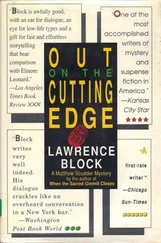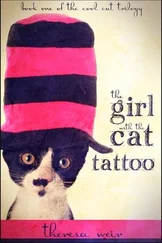—
EVEN THOUGH IT HAPPENED a few months after she first arrived, Lien’s strongest memory of the house in the Bilderdijkstraat is that of being hot and feverish in the mooie kamer. When Mrs. Heroma first brought her, she also went to the mooie kamer , sitting on the sofa, looking across at Auntie, a big woman with a rosy-cheeked face, who told Lien about her new cousins. Besides Lien, there are three other children in the household: Ali, who is eleven; Kees, who is nine; and little Marianne, who is nearly two. Ali and Kees first had a different mother, but she died.
After their talk in the front room, Mrs. Heroma says good-bye, leaving Lien behind with Auntie, who takes her through into the back of the house. In the kitchen Lien is absorbed into the hubbub. Because there are so many people coming and going it is impossible to feel like a guest for long. As she enters, little Marianne totters on uncertain legs in the corner, half supervised by Ali, and then slumps into a heap. Lien feels grown-up as she crouches to comfort her and she and Ali soon have the girl in fits of laughter. When Lien does a ballet dance Marianne sits rapt with attention, looking up with adoring eyes. At bedtime, from Auntie’s arms, Marianne gives Lien several wet kisses, leaving a little trail of cold baby spit on her cheek.
The first dinner is not so easy. She is given a deep plate with a mountain of potatoes, sprouts, and a meatball, all covered in gravy. Everyone is already eating—the talk continues uninterrupted except for the regular scrape of spoons. Lien toys with a potato. The digestive medicine, which Mamma normally gives her with a glass of water before a meal, is in her bag. She raises her hand to ask if she can go and get it. It takes a long time for her to be noticed but eventually Auntie calls out in her loud voice to ask what she wants. “Medicine?” Auntie loudly repeats the word as if it is something in a foreign language. Lien slips away to fetch the brown bottle and holds it out, label first, so as to explain. Auntie’s rosy face is all scrunched up with suspicion as she examines this object that Lien has brought into her house. Then she delivers her verdict. “You don’t need this, you can just eat your dinner with everyone else, hey,” Auntie tells her and pours the thick white liquid into the sink. Returning to the stove, Auntie continues to take part in the conversation, turning only briefly to instruct Kees not to bolt his food.
Around her, the plates are already emptying. The moment one is finished, Auntie reaches over the seated person, picks up the plate, brings it to the sink for a vigorous wash, then returns it steaming with fragrant tapioca. Gradually the kitchen fills with the smell of the hot pudding. Lien would like to leave her sprouts and potatoes and move on to her sweet, which was often what happened at home. The boy Kees, nearly finished, has stopped eating—he looks over at her with a conspiratorial, comradely air. Auntie, though, gives short shrift to the rebellion. The last of the tapioca is scraped from the pan and divided among the existing pudding eaters, who barely notice the ladle as it reaches down over their heads. Plates are cleared and not a word is spoken about the uneaten sprouts and potatoes. Lien is dumbfounded and feels a hollowness inside her—it is all so different—but she joins Kees and Ali to head outside.
After dinner they are allowed to play for another hour. Kees takes Lien with him and introduces her to his playmates. He seems proud of her. He is certainly proud of his ability to walk on the crumbling brick wall in the wasteland beyond the houses and scoffs when she notices afterward that he has cut his knee. Lien merges easily with the huddle of children who stand watching Kees as he jumps from one brick stack to another. Although they notice her accent and listen vaguely to her story she is soon part of the group.
As the late summer evening darkens, a new consciousness settles over the children, who move almost in union like a flock of birds. They melt into the little terraced houses, exchanging brief words about tomorrow’s plans. At number 10 the bustle is over. Auntie has finished cleaning the kitchen and is now knitting; Uncle sits reading, his face stern with concentration beneath the room’s only light. Kees, Ali, and Lien wash themselves at the sink and visit the loo. “ Trusten ,” says Auntie, which is short for welterusten , meaning “good night.”
The children share one bedroom, with the adults and baby Marianne in the other. Within minutes, Kees and Ali are sleeping. Lien lies listening to their regular breaths. As far as she can remember she has never slept in a room with other people. For a moment she thinks of her bedroom in the Pletterijstraat. At home Mamma always comes to sit by her in the evening, stroking her hair before she kisses her good night.
—
KEES SHAKES HER AWAKE IN THE MORNING. It is still holiday time and today he is going to catch tadpoles. He knows a place where you can find them even in August and Lien can come. They wolf down their bread and cheese at the kitchen table while Auntie watches and then scramble out the door. Outside the sun is shining, so she barely notices the chill as she runs following Kees through the empty lanes.
After ten minutes they are already in an area of farmland and industrial depots, which is where the secret supply of tadpoles is to be found. The blocked-up ditch that is their home has a slippery slope of grass and brambles and Kees edges down carefully, plowing the soil with a stick in his right hand to keep him steady, holding a jar in his left. He looks over his shoulder at Lien above him, then turns to paw at the water. Lien is not sure what he is trying to do, but after a few sweeps Kees seems satisfied. He holds his eye to the glass and then picks his way back up to her, the jar now filled with milky green liquid that sloshes over his hand.
Lien hardly dares touch the wet container, and it takes her a while to spot the strange tailed and legged creature swimming inside. She has never seen anything like it, though she has been told in school about tadpoles. It looks like a frog gone wrong. After a bit she is goaded into trying to catch one and finds herself sliding a little on her way down the slope. Reaching into the brown-green water she has the horrible sensation that there is something trying to climb its way into her shoe. Kees is confident about everything and calls down encouragingly, adding instructions to improve her technique, and soon there is a fellowship between them, which makes Lien more certain about what she is doing, so the air is filled with mutual cries of admiration as they work. At the end of the morning they have a whole set of the little monsters decanted into a single jar. After scrutinizing their catch through the glass, giving them names and characters, they pour the tadpoles back into the murk.
With this adventure behind them, Lien and Kees become firm friends. On other days there are different excursions. Kees teaches her to ring the doorbell at people’s houses and then scamper away to hide and look. They also climb the great bridge over the canal and peer down on the barges, which Kees tries to hit with little stones. He is very good at throwing and sometimes they hear the satisfying tinkle of glass. The town of Dordt and the countryside around it is their playground, and they can disappear into it for a whole unimaginably long day at a time. The two of them follow only the rules that they themselves decide on, glorying in their liberty as only children can. When they return in the evening to the Bilderdijkstraat they feel like conquering heroes, worthy of the banquet of sprouts, meatballs, and potatoes that awaits.
For the first time in her life Lien is free of her tummyaches. She eats happily in the small kitchen, she loves the talk and the bustle, she loves the freedom of running wild. At home she looks after little Marianne, telling her stories as she feeds her, one extra bit of story with each bite. Everyone follows the rules of the household—bedtimes, mealtimes, keeping your things tidy—but really she has to do almost nothing. Auntie cooks, washes, and cleans, seemingly without having to think about it, and for dinner everyone is always welcome to bring friends. If Uncle is studying in the evening they have to be quiet. She is a bit afraid of him but she also admires him terribly. Men and women listen when he talks to them and they always do what he says.
Читать дальше












